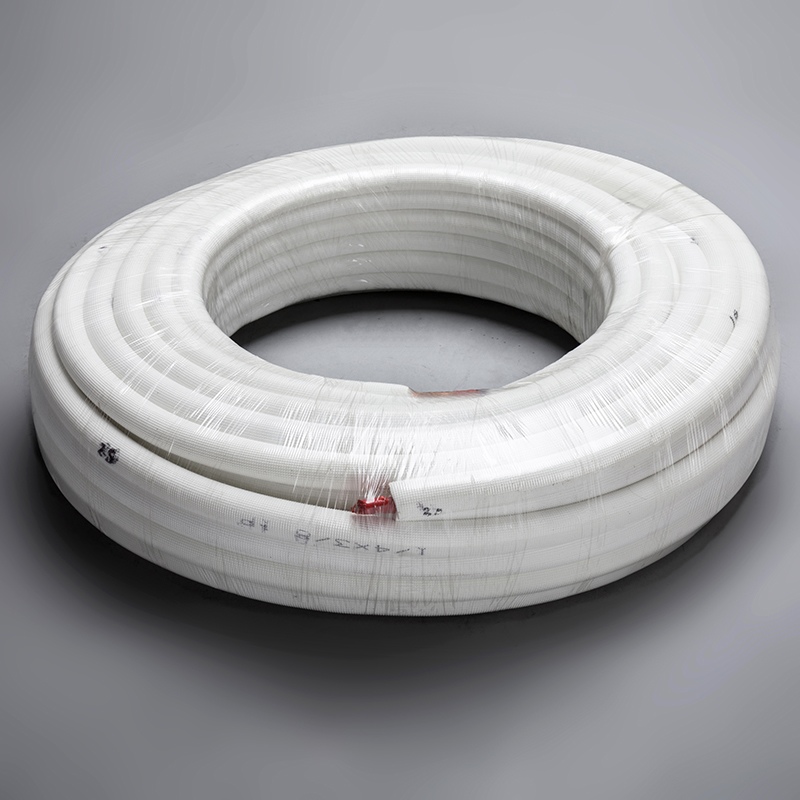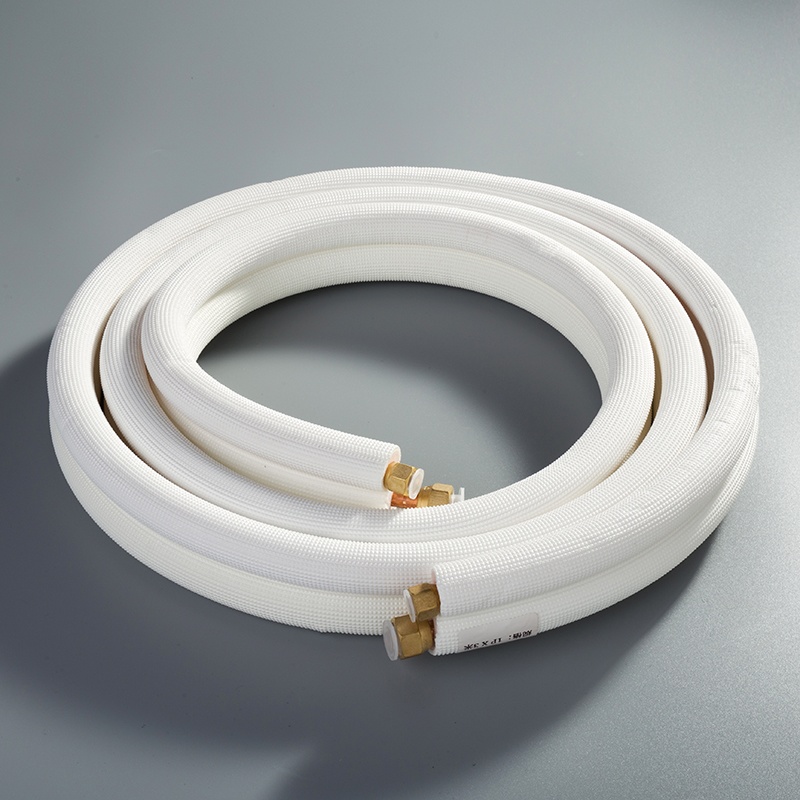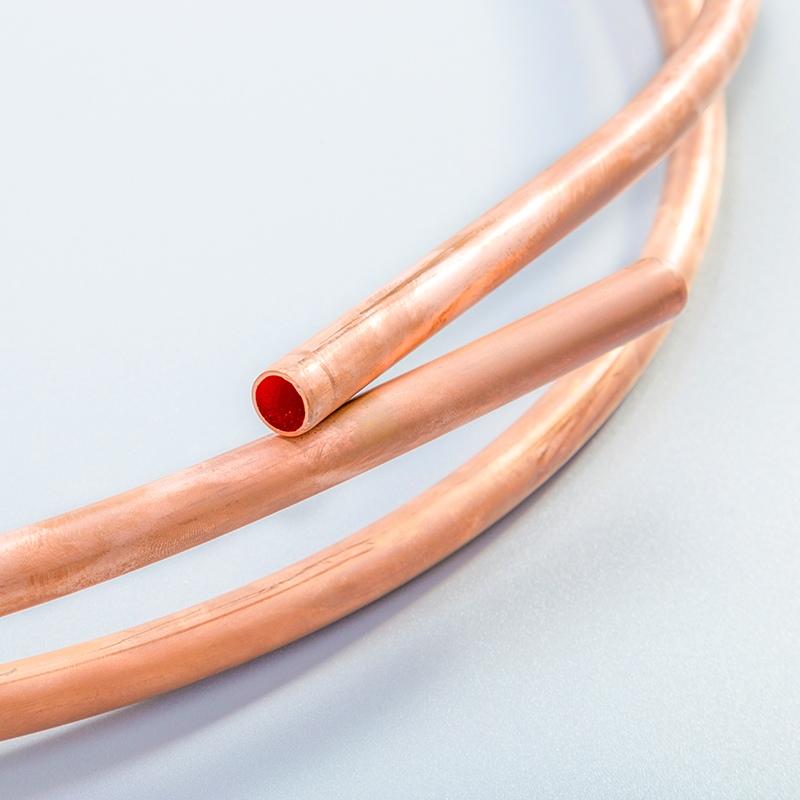5 Essential Steps to Choosing the Right Copper Pipe Diameter

Selecting the correct copper pipe diameter is crucial for ensuring optimal performance and efficiency in plumbing systems. Understanding the impact of incorrect pipe diameter on system efficiency is essential. By following the five essential steps outlined in this blog, individuals can make informed decisions when choosing the appropriate copper pipe diameter for their specific needs. These steps will help avoid issues such as poor connections, potential leaks, and low water pressure. Additionally, considering the copper pipe price and the copper pipe size is important for budgeting and fitting purposes. Knowing how to copper pipe solder properly is also vital to ensure secure and leak-free joints. Let's delve into these steps to empower you in making the right choice.
Determine Flow Rate

When considering the flow rate in a plumbing system, it is crucial to understand its significance in determining the appropriate copper pipe diameter. The flow rate refers to the volume of water passing through the pipes within a specific time frame. By comprehending this factor, individuals can ensure efficient water distribution and prevent issues such as erosion or excessive noise.
To measure the flow rate, one must calculate the amount of water passing through a specific point in the system per unit of time accurately. This measurement is essential for determining the optimal copper pipe diameter that can accommodate the required flow rate without compromising performance.
The relationship between flow rate and diameter is fundamental; selecting a diameter too small can lead to increased pressure and reduced efficiency. Conversely, choosing a diameter too large may result in unnecessary costs and space requirements. Understanding examples of various flow rate requirements for different applications can guide individuals in making informed decisions when selecting the right copper pipe diameter.
Consider Pressure Rating
When evaluating the importance of pressure rating in selecting the right copper pipe diameter, individuals must understand its critical role in ensuring system integrity and longevity. The pressure rating indicates the maximum pressure that the pipe can withstand without compromising its structural integrity. By considering this factor, individuals can avoid potential hazards such as bursts or leaks due to excessive pressure.
Understanding the definition of pressure rating is essential; it provides insight into the pipe's capabilities under varying pressure conditions. This knowledge empowers individuals to make informed decisions when selecting a suitable copper pipe diameter that aligns with their specific needs and operating pressures.
To ensure safety and efficiency, individuals must prioritize measures to prevent pipe bursts caused by exceeding the recommended pressure limits. Additionally, maintaining optimal performance involves regular inspections and monitoring of pressure levels to detect any anomalies promptly.
Balance Flow Velocity and Pressure Drop
Understanding Flow Velocity
The flow velocity in copper pipes plays a crucial role in maintaining optimal system performance. It refers to the speed at which water travels through the pipes, impacting pressure and flow rates. Understanding this concept is essential for ensuring efficient water distribution without compromising system integrity.
Achieving the ideal flow velocity for copper pipes is vital to prevent issues such as erosion or noise disturbances. By selecting an appropriate diameter that aligns with the required flow rate, individuals can optimize water flow and maintain consistent pressure levels throughout the plumbing system.
Managing Pressure Drop
The pressure drop in copper pipes occurs when there is a reduction in pressure along the pipe's length due to friction or obstructions. Minimizing pressure drop is essential to ensure steady water flow and prevent inefficiencies within the system.
By understanding how to reduce pressure drop through proper pipe sizing and layout design, individuals can enhance overall system performance and efficiency. Implementing strategies such as using smooth bore pipes and minimizing bends can help maintain consistent pressure levels and improve water distribution throughout the plumbing network.
Consult Sizing Charts

When referring to sizing charts for copper pipe selection, individuals gain valuable insights into the optimal pipe diameter for their specific needs. Understanding how to read sizing charts is essential; these charts provide information on various pipe dimensions and corresponding flow rates. By interpreting the data accurately, individuals can make informed decisions when choosing the right copper pipe diameter.
Utilizing sizing charts allows individuals to visualize the relationship between pipe size and flow capacity, ensuring efficient water distribution throughout the plumbing system. Examples of sizing charts showcase different scenarios and corresponding pipe diameters, aiding in selecting the most suitable option based on specific requirements.
For complex projects or unique applications, seeking professional consultation is advisable. Knowing when to seek professional help ensures that experts can provide tailored recommendations based on project specifications and industry standards. The benefits of professional advice include accurate sizing calculations, compliance with regulations, and access to advanced technical knowledge for a successful plumbing installation.
Check Compatibility with Fittings
Types of Fittings
Common Fittings for Copper Pipes
When selecting fittings for copper pipes, individuals must consider the compatibility between the fittings and the pipes themselves. Push Fit Fittings are a popular choice due to their ease of installation and secure connections. These fittings must match the size and type specifications of the pipes to prevent leaks and ensure optimal effectiveness. It is crucial to choose fittings known for their durability and reliability to maintain long-term performance.
Use Push Fit Fittings for easy installation
Ensure fittings match pipe size and type specifications
Choosing the Right Fittings
To guarantee a leak-free installation, individuals should prioritize selecting fittings that align with their specific copper pipe requirements. Reading reviews and product specifications can provide insights into the durability and lifespan of different fitting options. Opting for correctly sized fittings is essential to avoid poor connections that may lead to potential leaks.
Read reviews and product specifications
Choose correctly sized fittings for optimal performance
Ensuring Leak-Free Installation
Importance of Compatibility
Ensuring compatibility between copper pipes and fittings is crucial to prevent leaks and maintain system efficiency. Properly matched components create secure connections that withstand varying pressures without compromising performance. By prioritizing compatibility, individuals can avoid issues such as leaks or bursts, ensuring a reliable plumbing system.
"Choose fittings that precisely match your pipe's size and type specifications."
Tips for Leak-Free Connections
To achieve leak-free connections, individuals should pay attention to detail when selecting fittings for their copper pipes. Checking product warranties can provide assurance of long-term reliability. Additionally, verifying that the selected fittings align with both the size and type of copper pipes used is essential to prevent potential leaks.
Verify product warranties for reliability assurance
Ensure selected fittings match pipe size and type specifications
To make an informed decision on what size of copper pipe to use, individuals must consider the relationship between pipe size and water pressure. Larger pipes result in less pressure loss and increased water pressure at fixtures. This knowledge can guide individuals in selecting the optimal copper pipe diameter for their specific needs.
When choosing the right copper pipe diameter, reflecting on personal experiences can provide valuable insights. For instance, having larger copper pipes initially led to improved water pressure at fixtures. Understanding these practical implications can aid in making well-informed decisions regarding copper pipe sizing for efficient plumbing systems.
See Also
Key Copper Pipe Sizes Every Plumber Must Understand
Top Tips for Installing 1/4 Copper Pipe Connectors
Complete Manual: Measuring Copper Pipe Diameter
Crucial Advice for Dealing with Irregular 1/2' Copper Tubing


